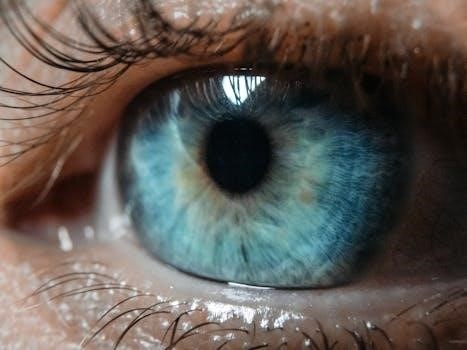
Creating a scanned PDF effect digitally offers a convenient alternative to using physical scanners. This process involves transforming clean digital PDFs into documents that appear as if they were printed and then scanned‚ complete with imperfections like noise and distortions.
Why Make a PDF Look Scanned?
There are several compelling reasons to simulate a scanned appearance for PDF documents. Firstly‚ it can lend an air of authenticity‚ making digital documents feel more like physical‚ tangible records. This is particularly useful when dealing with documents intended to mimic traditional paper-based processes. Additionally‚ adding a scanned effect can enhance the perceived security of the file‚ as it suggests a physical document that has been digitized‚ making it seem less susceptible to digital tampering. The ability to create scanned PDFs digitally also eliminates the need for physical scanners and printers‚ offering a more convenient and efficient workflow. Furthermore‚ for certain applications‚ such as sharing official documents‚ a scanned look may be preferred or even expected‚ and this method makes it much easier to make it digitally. Finally‚ this process can be useful for developers and designers looking for a simple way to add scanned effects without needing physical resources. This makes it a valuable tool for various applications‚ from creating mockups to handling digital paperwork.

Tools for Creating Scanned PDF Effects
Several tools are available for adding scanned effects to PDFs‚ ranging from frontend web applications to desktop PDF editors. These tools offer various methods to simulate the look of a scanned document digitally.
Frontend Web Applications
Frontend web applications provide a convenient and accessible way to simulate scanned PDF effects directly within your browser. These tools‚ often built using technologies like WebAssembly‚ process your PDF files entirely client-side‚ meaning no data is sent to a server‚ ensuring privacy and speed. Look Scanned is a prime example‚ offering a purely frontend solution that avoids the need for printers and scanners. These applications typically allow users to upload a PDF‚ apply various scan effects‚ and then download the modified file. The speed of processing is often remarkably quick‚ with some tools claiming to ‘scan’ a PDF in a second. This approach is ideal for users who value privacy and prefer not to rely on server-side processing for their document manipulations. Moreover‚ the ease of use and accessibility of web applications make them a great option for many. They handle files rapidly and securely‚ providing an efficient way to make your PDFs look scanned.
Desktop PDF Editors
Desktop PDF editors offer another avenue for simulating scanned PDF effects‚ providing a more feature-rich environment for document manipulation. While some editors primarily focus on tasks like adding text or digital signatures‚ others incorporate tools to apply visual effects that mimic a scanned document; Applications such as Adobe Acrobat and Apple Preview‚ though not primarily designed for this purpose‚ can be used alongside other plugins or tools to achieve a similar result. These editors typically offer more granular control over the editing process‚ allowing users to fine-tune the applied effects and combine them with other modifications like annotations or free-hand drawing. Desktop applications might require a more substantial installation compared to web apps‚ but they offer the advantage of offline access and potentially more powerful processing capabilities. This makes them suitable for users needing advanced editing features‚ while also allowing for the simulation of scan effects.

Methods for Adding Scan Effects
Several techniques can be used to simulate the look of a scanned document. These include adding noise and grain‚ applying distortions‚ and simulating paper texture. Each method contributes to the overall scanned aesthetic.
Adding Noise and Grain
Introducing noise and grain is a fundamental step in simulating a scanned PDF. This effect replicates the subtle imperfections that naturally occur during the scanning process. Real-world scanners often introduce slight variations in pixel color and intensity‚ creating a grainy or speckled appearance. By digitally adding noise‚ we mimic this effect‚ making the PDF look less pristine and more like a document that has been through a physical scanner. This can be achieved by overlaying a layer of randomly generated pixels with varying transparency. The intensity of the noise can be adjusted to create a more or less pronounced effect‚ allowing for customization based on the desired level of realism. Additionally‚ the type of noise‚ such as monochromatic or colored‚ can also be varied to mimic different scanner characteristics. The subtle texture created by noise and grain is crucial in achieving a convincingly scanned aesthetic‚ distinguishing it from a perfectly clean digital document. This subtle touch significantly enhances the perceived authenticity of the simulated scan.
Applying Distortions
Applying distortions is another key technique for simulating a scanned PDF‚ replicating the imperfections that occur during the physical scanning process. When a document is scanned‚ it may not always lie perfectly flat on the scanner bed‚ leading to slight warping or skewing of the text and images. To recreate this‚ we can digitally apply various transformations to the PDF content. These might include subtle shifts‚ rotations‚ or stretches of the entire page or parts of it. Such distortions mimic the unevenness and imperfections that are common in scanned documents. The intensity of these distortions can be adjusted‚ from barely noticeable to more pronounced‚ to mimic different scanning conditions. For example‚ a slightly warped look could be achieved by applying a gentle wave-like distortion‚ while a slight skew could simulate a document that wasn’t perfectly aligned during scanning. These effects add to the realism of the simulation‚ making the PDF look less perfect and more like it was captured through a physical scanning process.
Simulating Paper Texture
Simulating paper texture is crucial for making a digital PDF look genuinely scanned‚ as it adds depth and realism to the visual effect. Real paper has a distinct surface‚ whether it’s the subtle grain of standard office paper or the more pronounced texture of thicker stock. When a document is scanned‚ this texture is often captured‚ creating a subtle‚ uneven surface appearance that’s absent in clean‚ digital PDFs. To mimic this‚ we can add a texture overlay to the PDF‚ typically using a pattern or image that resembles paper. This overlay is usually applied with a degree of transparency‚ allowing the original document content to remain clearly visible while creating a visual sense of a paper surface. This technique often uses a light‚ speckled pattern to resemble the slight irregularities of paper fibers. The intensity of the texture can be adjusted‚ from a very subtle effect that just adds a hint of realism to a more pronounced texture that makes the document look like it was printed on rough paper.

Customization Options
Customization is key for achieving the desired scanned look. Users can adjust the intensity of effects like noise and distortion. Adding signatures or annotations are also a possibility‚ providing a more realistic‚ personalized feel to the simulated scan.
Adjusting Intensity of Effects
The ability to adjust the intensity of scan effects is crucial for achieving a realistic and tailored look. Users often want to fine-tune the level of noise‚ grain‚ and distortions applied to their PDF documents. This control allows for a subtle suggestion of a scanned document or a more pronounced effect‚ depending on the desired outcome. For instance‚ if the goal is to simulate a lightly scanned document from a high-quality printer‚ the intensity of the noise might be reduced‚ while a scan from older equipment could benefit from increased distortions and grain. Furthermore‚ the ability to customize these parameters ensures that the simulated scan aligns with the specific aesthetic requirements of the user. The flexibility in adjusting these effects allows for a wide range of looks that are suitable for various purposes. Whether you want a barely-there scan effect or a heavily aged document‚ the fine-tuning of intensity is essential. This ensures that the simulated scan is not only realistic but also tailored to the individual needs of the user.
Adding Signatures and Annotations
Beyond just simulating the look of a scanned document‚ the ability to add signatures and annotations is a vital part of many workflows. Users often need to include digital signatures for verification or apply handwritten notes and highlights for collaboration. The integration of these features with simulated scan effects provides a more complete solution. This means users can not only make their documents look scanned but also add the necessary legal and communicative elements. The process of adding signatures should be straightforward‚ allowing users to easily place digital signatures on their documents. Similarly‚ the ability to annotate or sketch directly onto the document is essential‚ whether it be for marking sections for review or adding freehand drawings. By combining the scan effects with signatures and annotations‚ the documents becomes more functional and realistic. This ability to integrate these features ensures a more complete solution for users who need both the look of a scanned document and the functionality of digital annotations.
Working with Multiple Pages
When dealing with documents‚ particularly those that need a scanned appearance‚ the ability to efficiently manage multiple pages is crucial. The process should not be limited to single-page operations; it should seamlessly handle multi-page PDFs‚ applying the simulated scan effects consistently across all pages. This functionality is essential for maintaining a uniform look throughout the document. Furthermore‚ users may need to index or group these scanned pages by number‚ especially when dealing with large documents or sets of related files. This allows for organized management and retrieval of pages‚ which is particularly useful for tasks such as indexing financial documents or legal records. The ability to process multiple pages also ensures that large documents don’t need to be treated as separate entities and can be transformed into a single‚ uniform document with scanned effects. This streamlines workflows and enhances the overall efficiency for users that need to process large amounts of documentation. This ensures a cohesive look and makes managing large documents easier.

Privacy and Security Considerations
When simulating scanned PDF effects‚ privacy and security are paramount‚ especially given that many documents may contain sensitive information. It’s crucial to use tools that process your files directly in your browser‚ ensuring that your data does not leave your device. This approach significantly reduces the risk of data breaches and unauthorized access. Avoid services that require uploading your documents to external servers‚ as this may expose your data to potential vulnerabilities. Look for tools that utilize frontend technologies‚ like WebAssembly‚ which allow for processing locally on your machine. This ensures that your documents remain private and secure throughout the transformation process. Furthermore‚ consider the implications of adding signatures or annotations‚ and ensure that the tool you use does not store this information without your consent. By prioritizing privacy and security‚ you can confidently simulate scanned effects without compromising the confidentiality of your documents‚ protecting sensitive information from unauthorized access and maintaining peace of mind.

